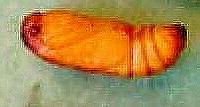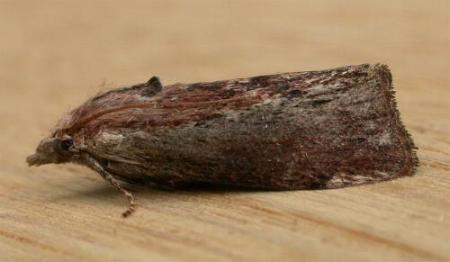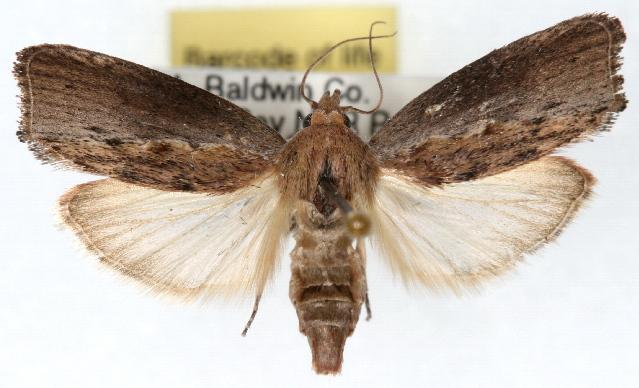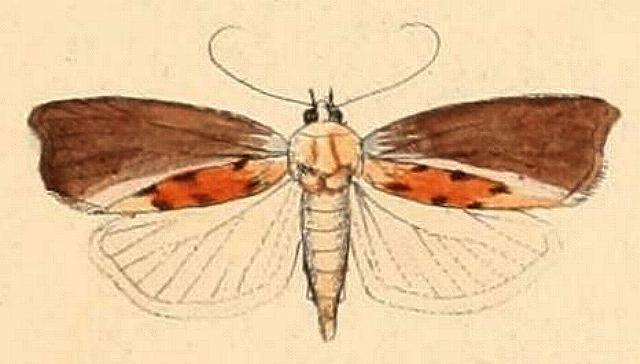
| Greater Wax Moth (one synonym : (Galleria austrina Felder & Rogenhofer, 1875) GALLERIINAE, PYRALIDAE, PYRALOIDEA | (donherbisonevans@yahoo.com) and Stella Crossley |

(Photo: courtesy of H. A. Turney
Texas A&M University)

| Greater Wax Moth (one synonym : (Galleria austrina Felder & Rogenhofer, 1875) GALLERIINAE, PYRALIDAE, PYRALOIDEA | (donherbisonevans@yahoo.com) and Stella Crossley |

(Photo: courtesy of H. A. Turney
Texas A&M University)
The Caterpillars of this moth are an international pest in beehives, tunneling through the combs, feeding on pollen, wax and honey. Their preference is for abandoned hives, or hives where the colony has been weakened. As well as eating wax, they have also been found to be able to digest polythene plastic
The caterpillars are a pale honey colour with a brown head. They are used to study insect physiology, and they make excellent bait for fishing. They are often used for the study of Nematodes.

The Caterpillars make white cocoons in the hive, which shield the orange pupa.

The adult moth has brown forewings each with vague markings, and a broad red band along the hind margin containing black spots. The hindwings are white. The moth has a wing span of about 3 cms. The moths are capable of hearing sounds up to 300KHz, which includes the range commonly used by bats to echo-locate moths.

The female moth often lays over 1,000 eggs, usually in batches of about 100. They are laid in cracks or corners. The eggs are also a pale honey colour, oval, and about 0.5 mm across. They are well camouflaged and easily overlooked.

Attempts are being made to control the pest by :

The moth species is found all over the world, for example :
and was introduced by unfortunate accident into Australia, and now occurs in :
Further reading :
Ian F.B. Common,
Moths of Australia,
Melbourne University Press, 1990, fig. 31.6, pp. 47, 68, 347.
Rudolf Felder & Alois F. Rogenhofer,
Zoologische Theil, Lepidoptera,
Reise der Osterreichischen Fregatte Novara,
Band 2, Abtheilung 2 (5) (1875), p. 10, and also
Plate 137, fig. 7.
Carl Linnaeus,
Insecta Lepidoptera,
Systema Naturae,
Edition 10, Volume 1 (1760), Class 5, Part 3, p. 537, No. 257.
 caterpillar |  butterflies |  Lepidoptera |  moths |  caterpillar |
(updated 7 May 2008, 13 May 2025)